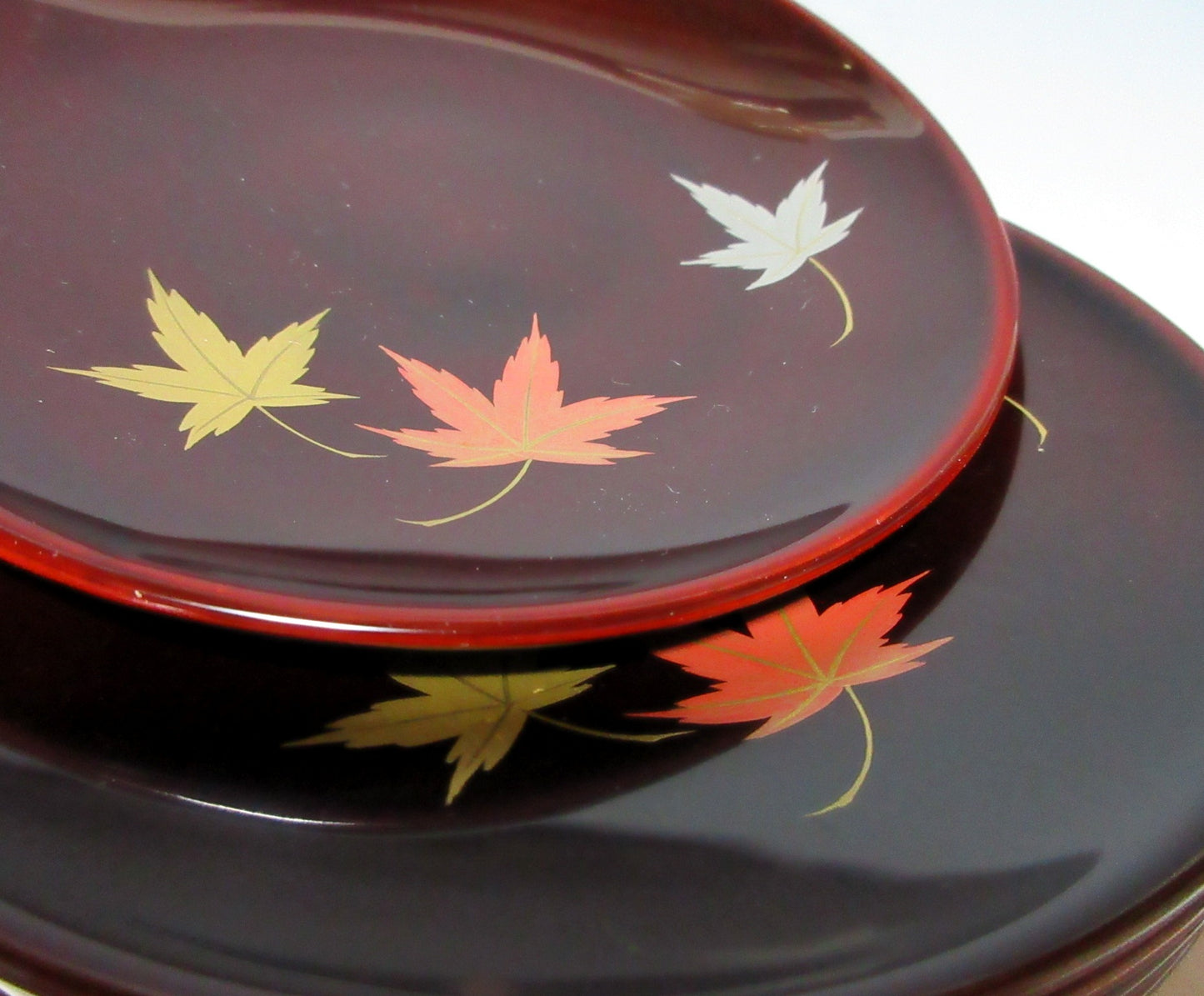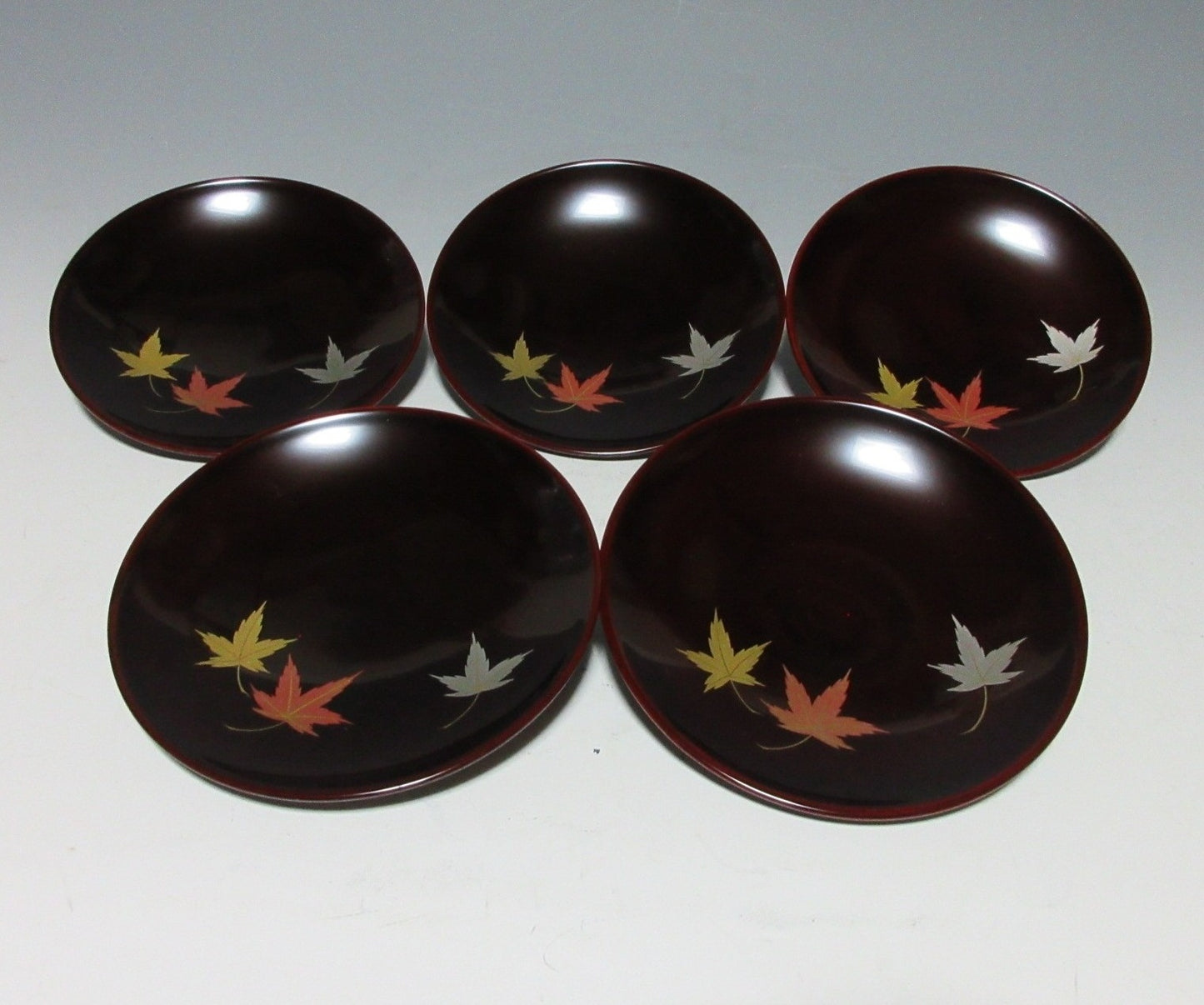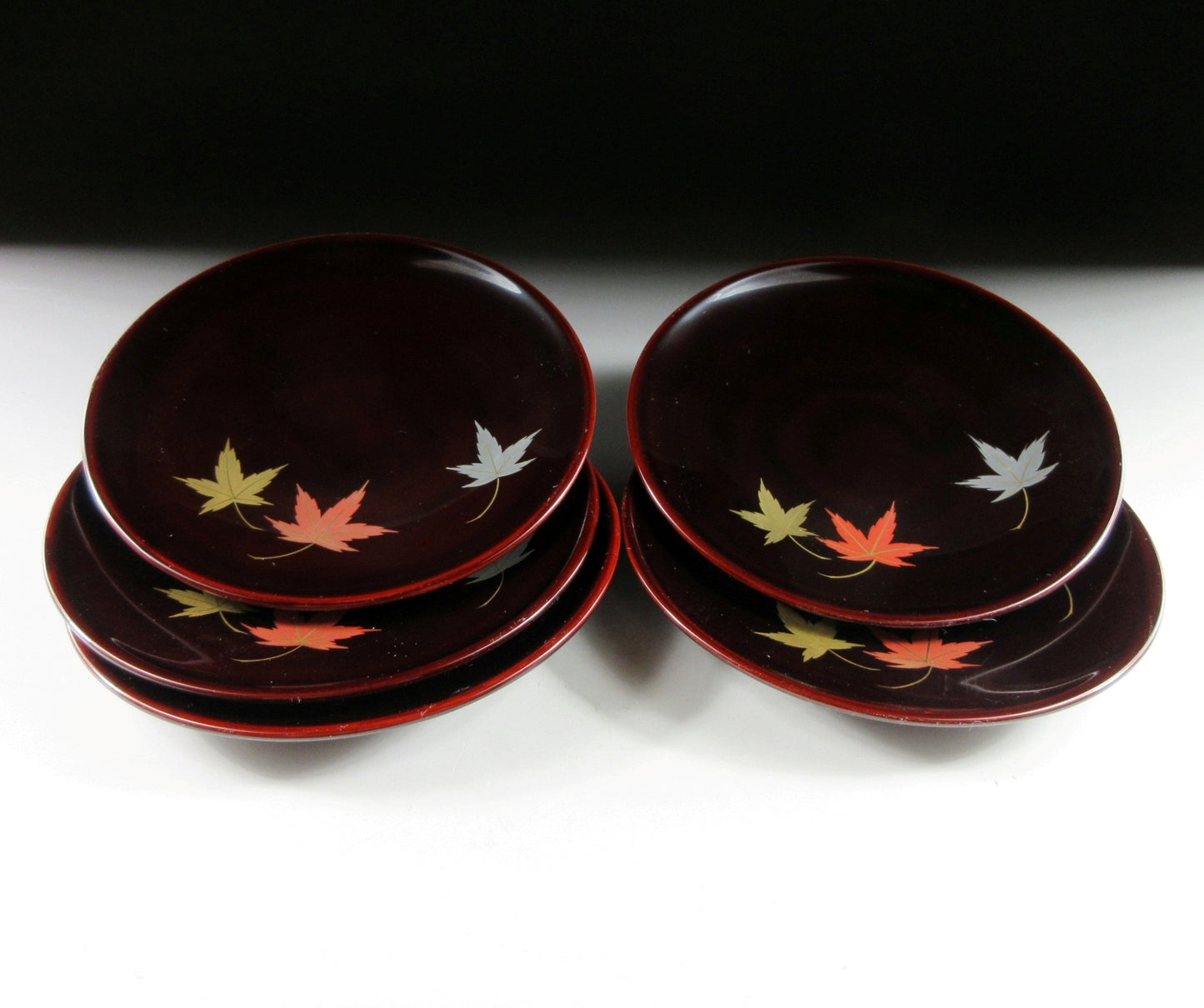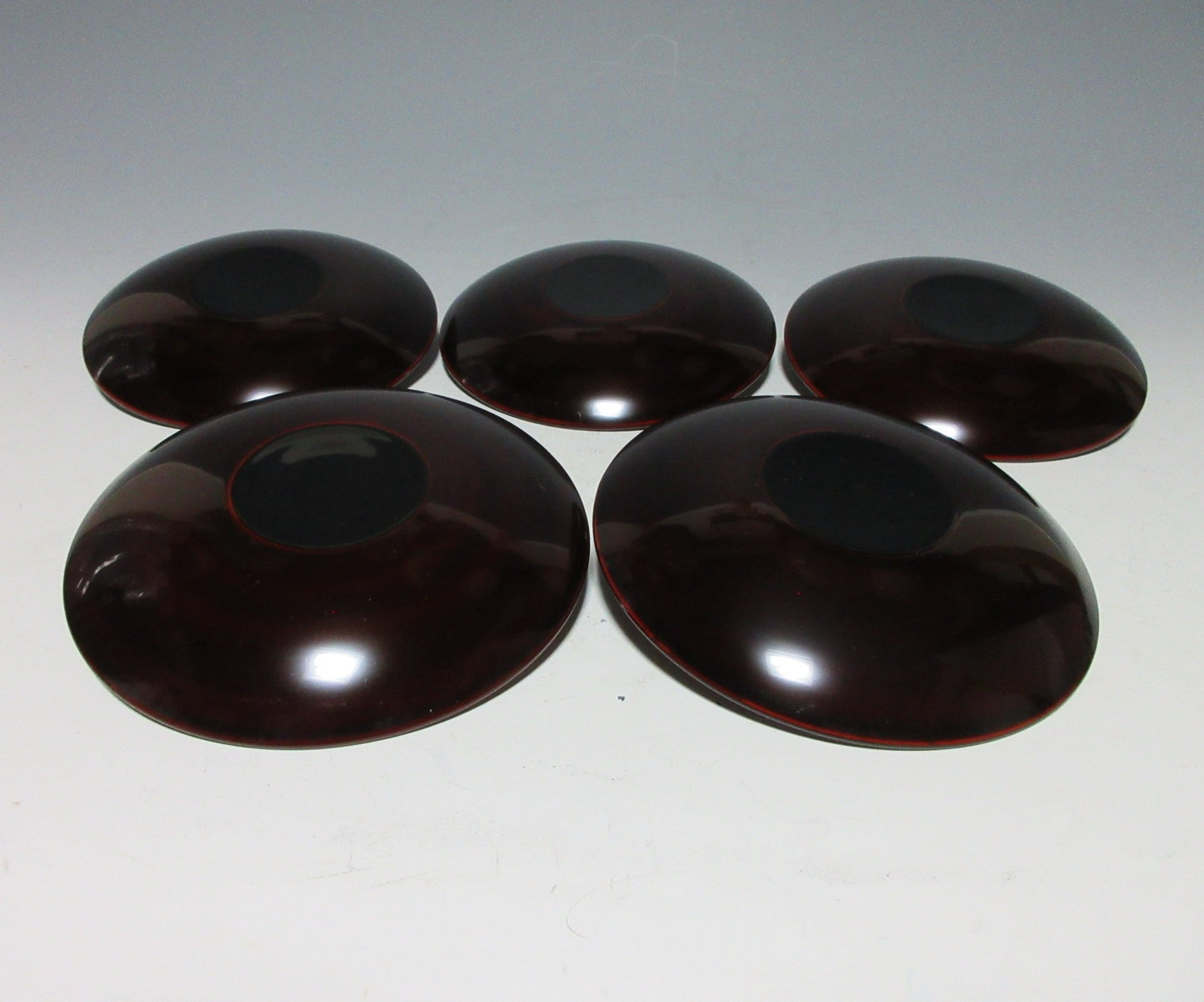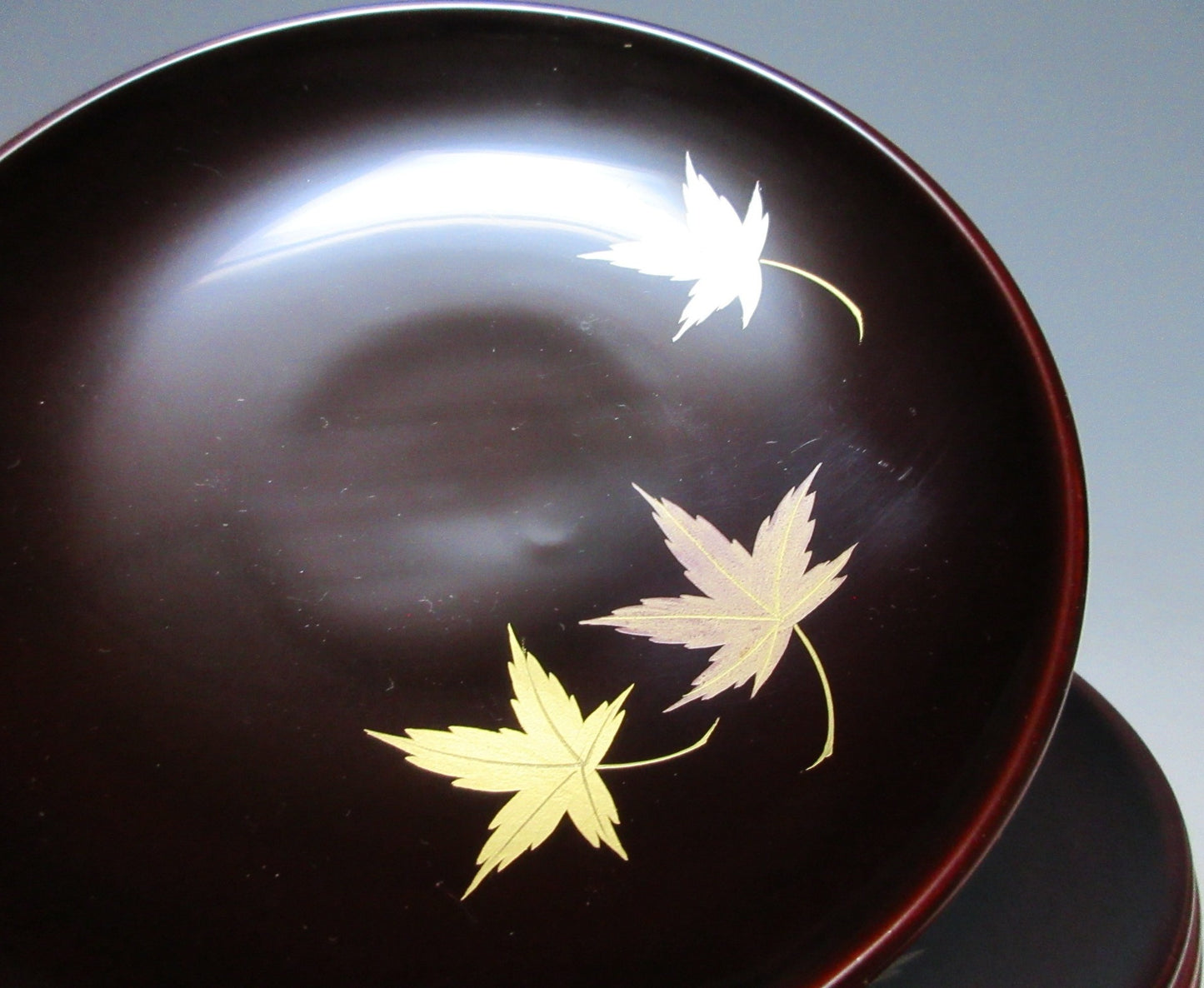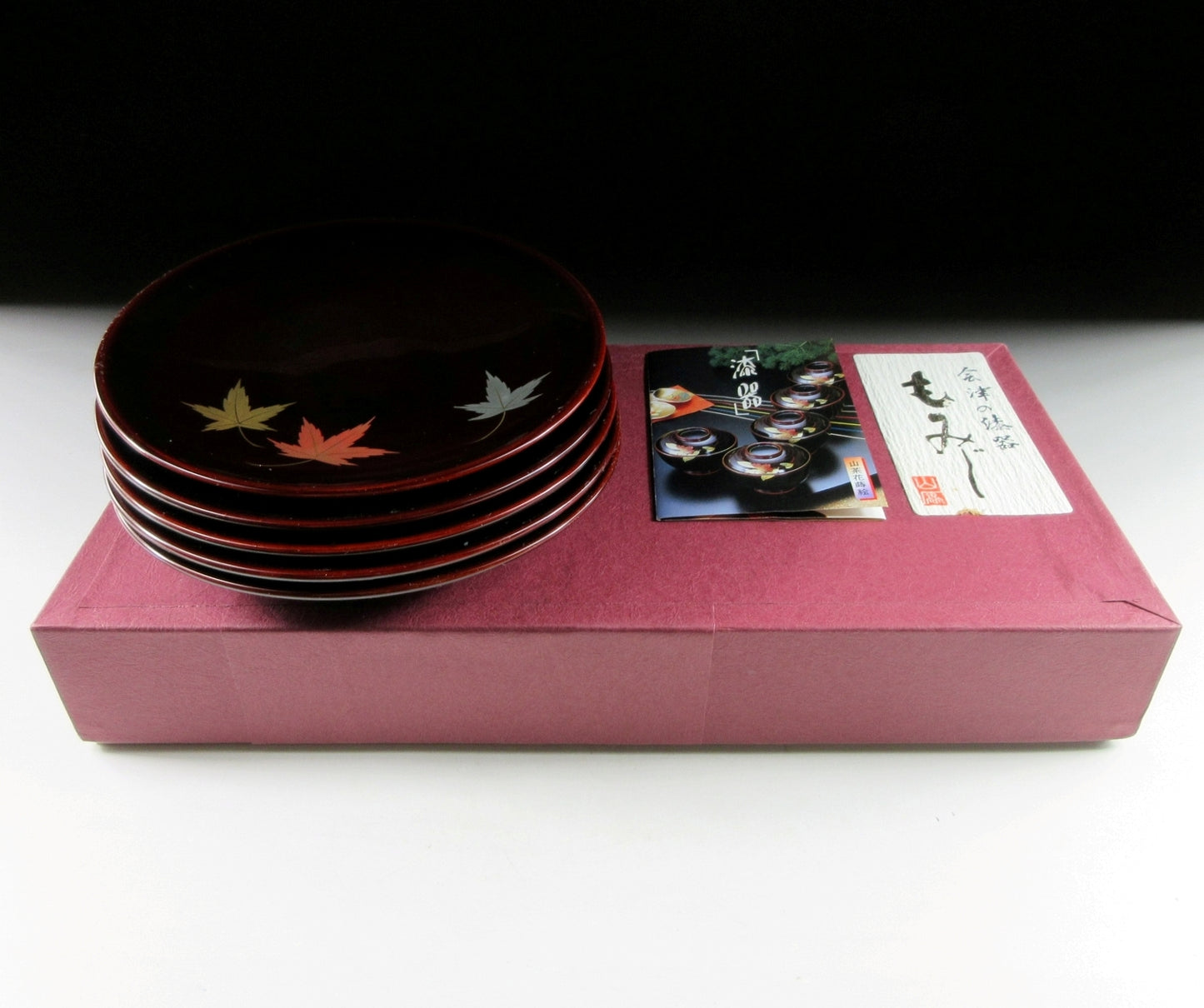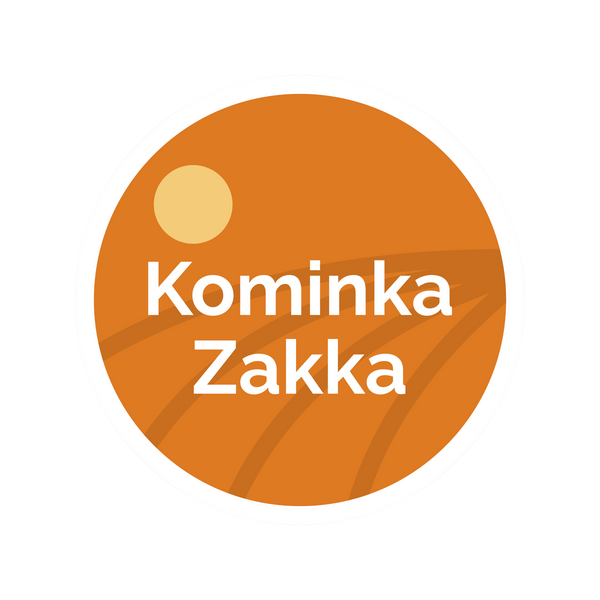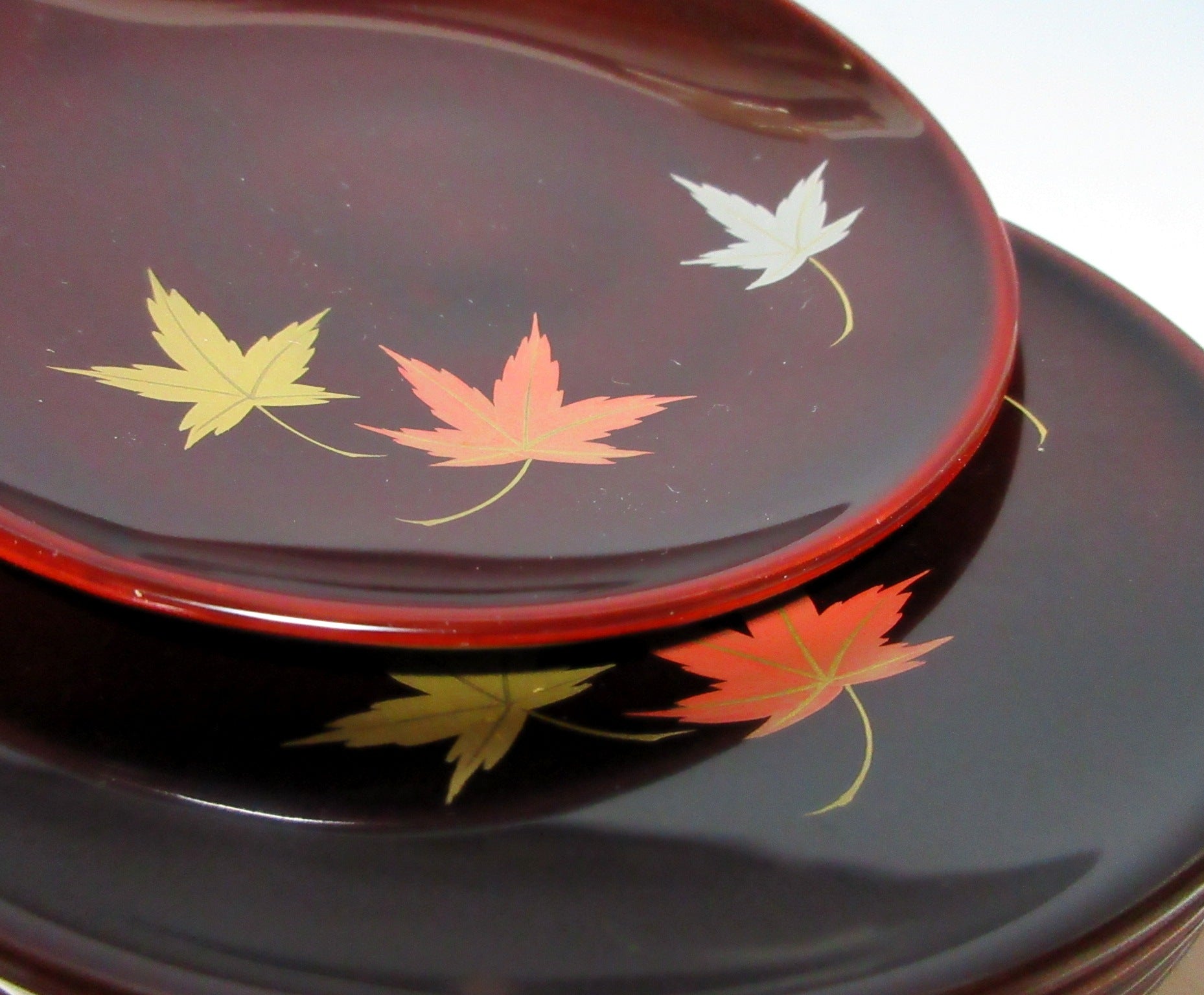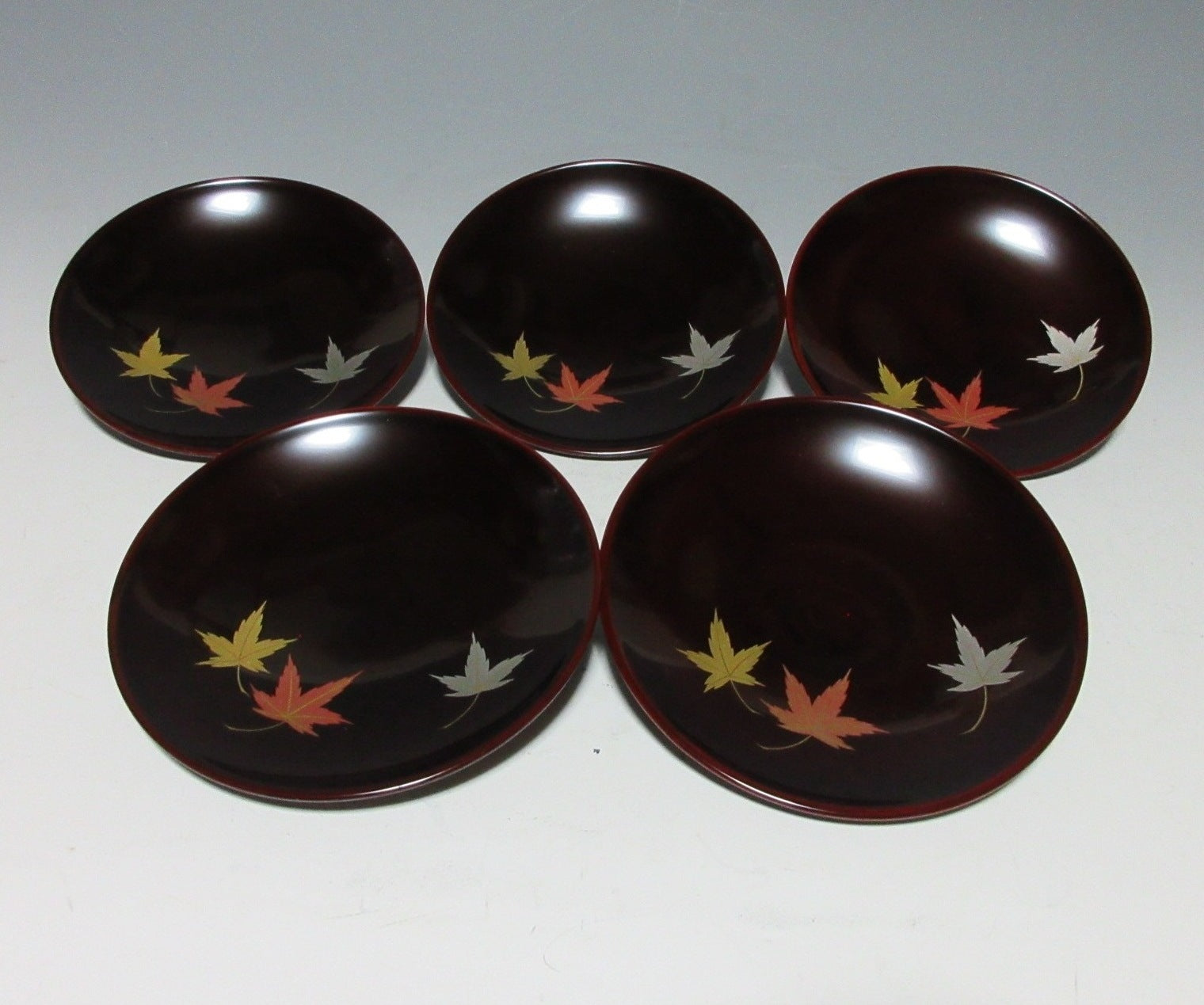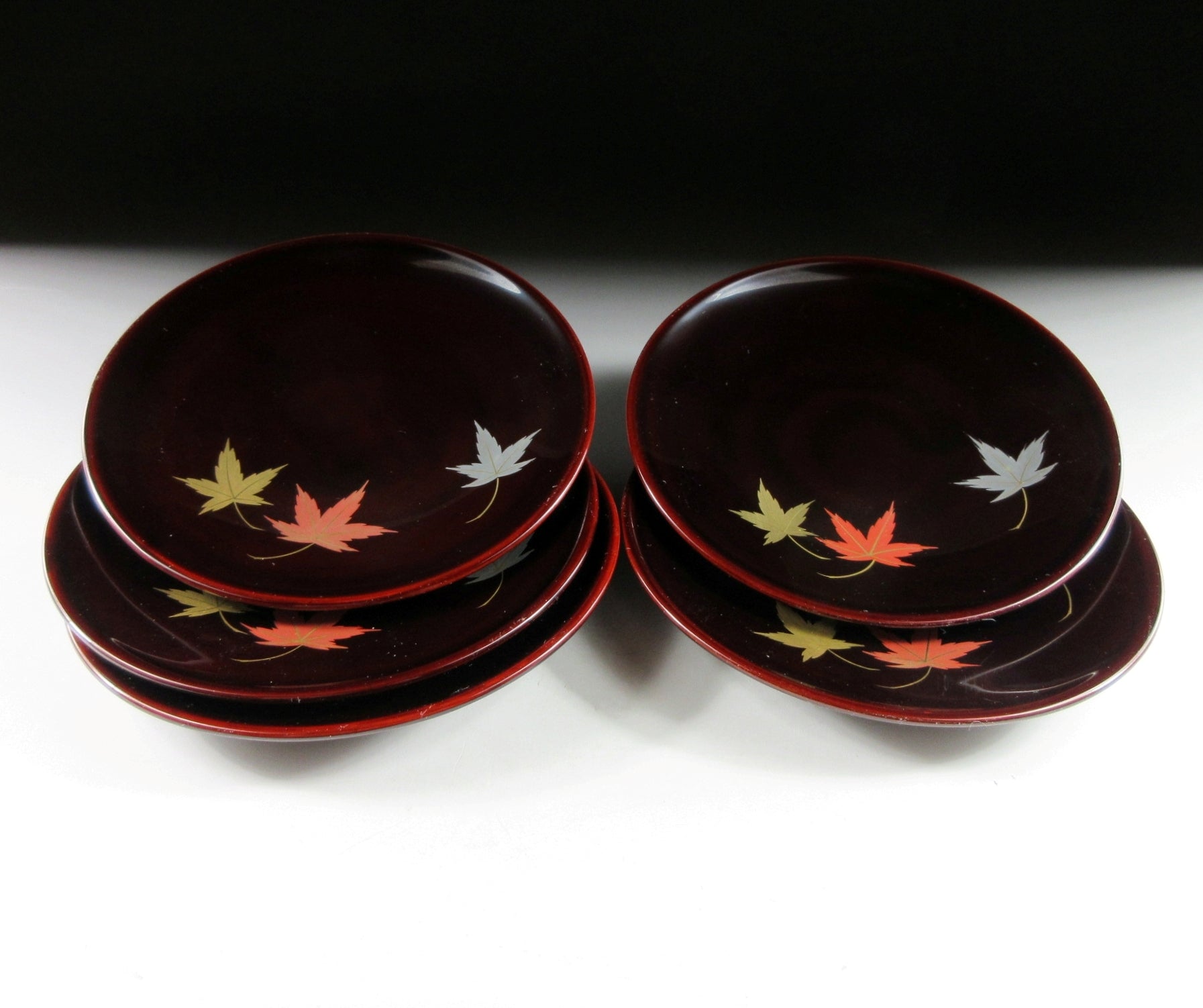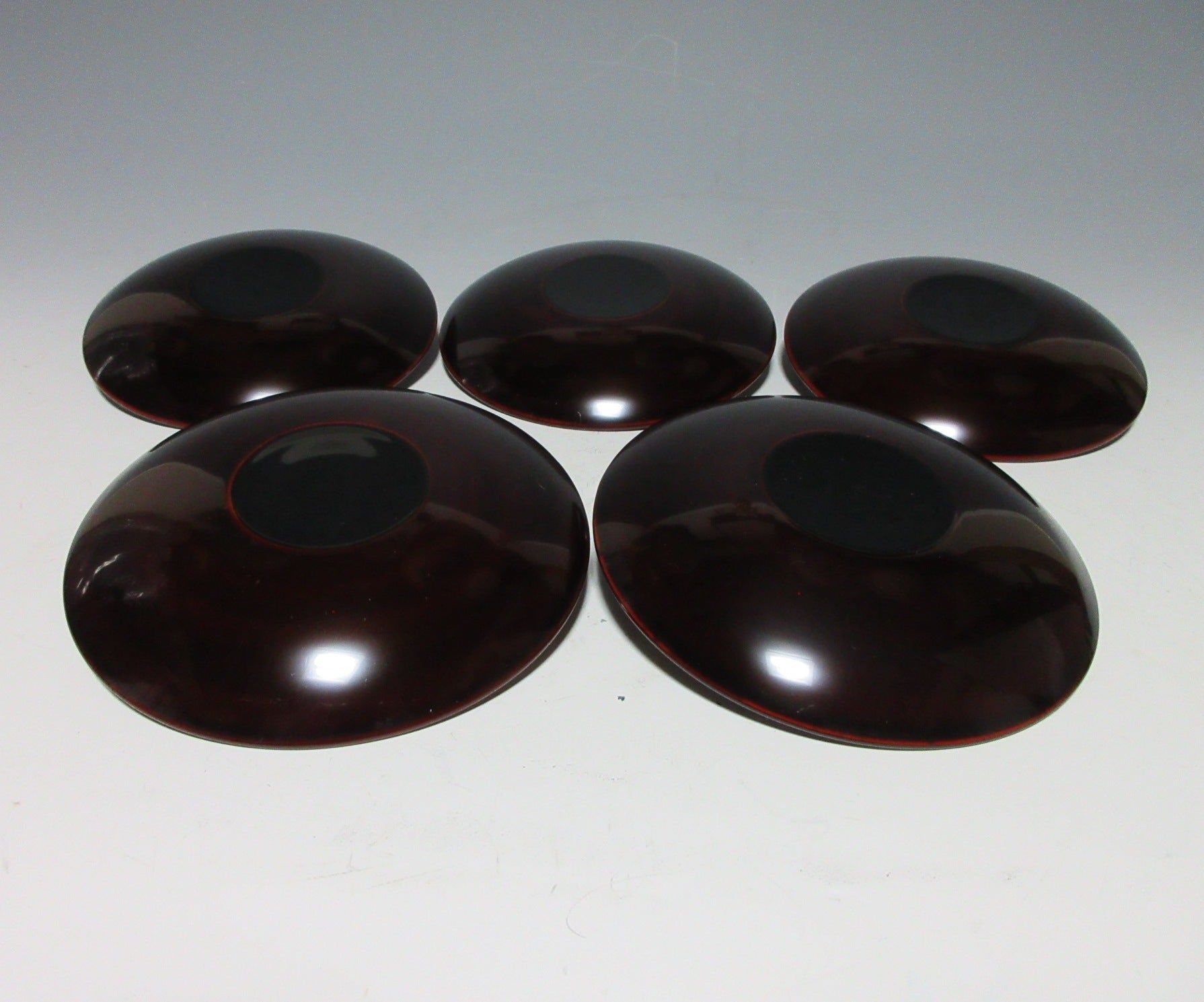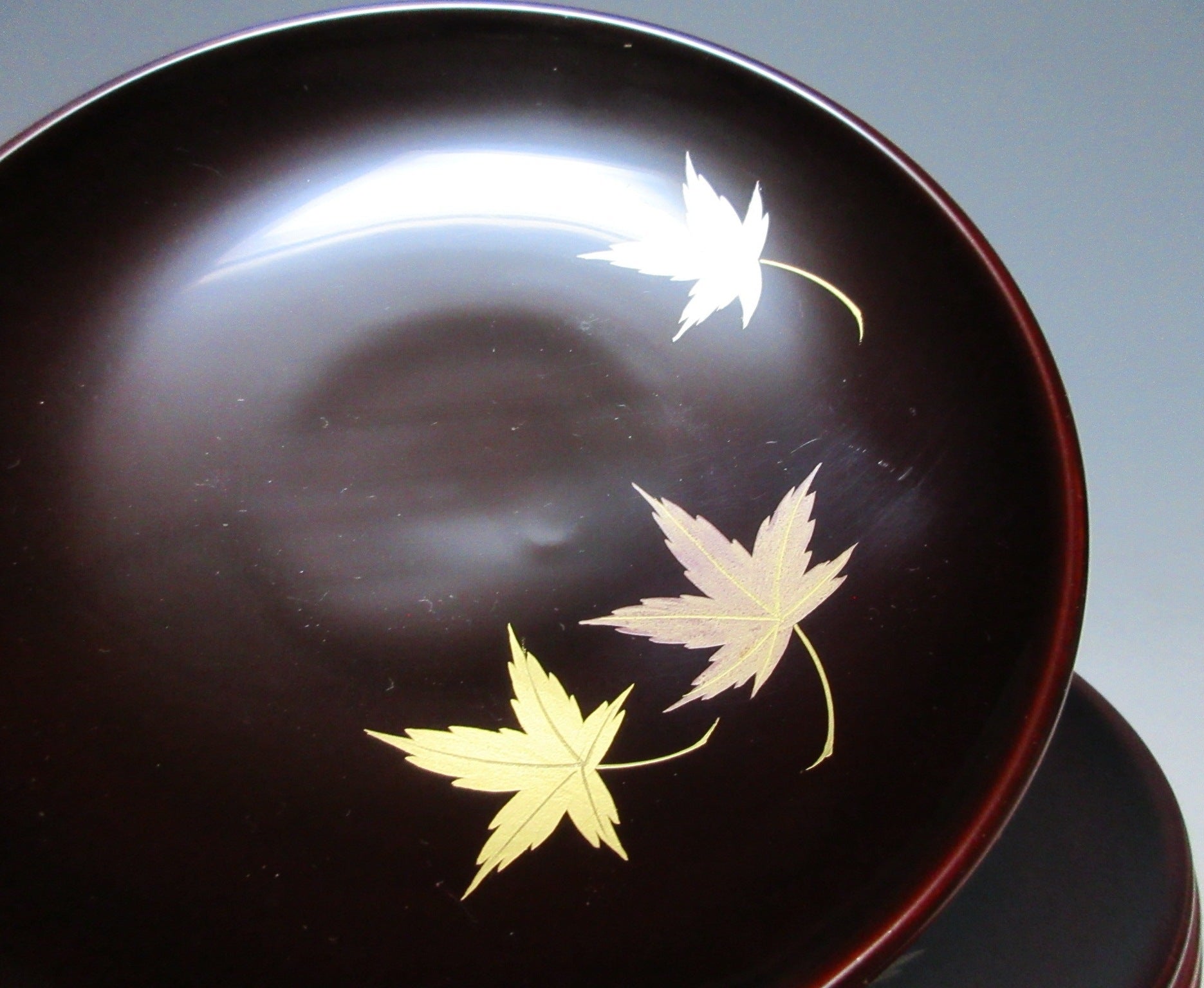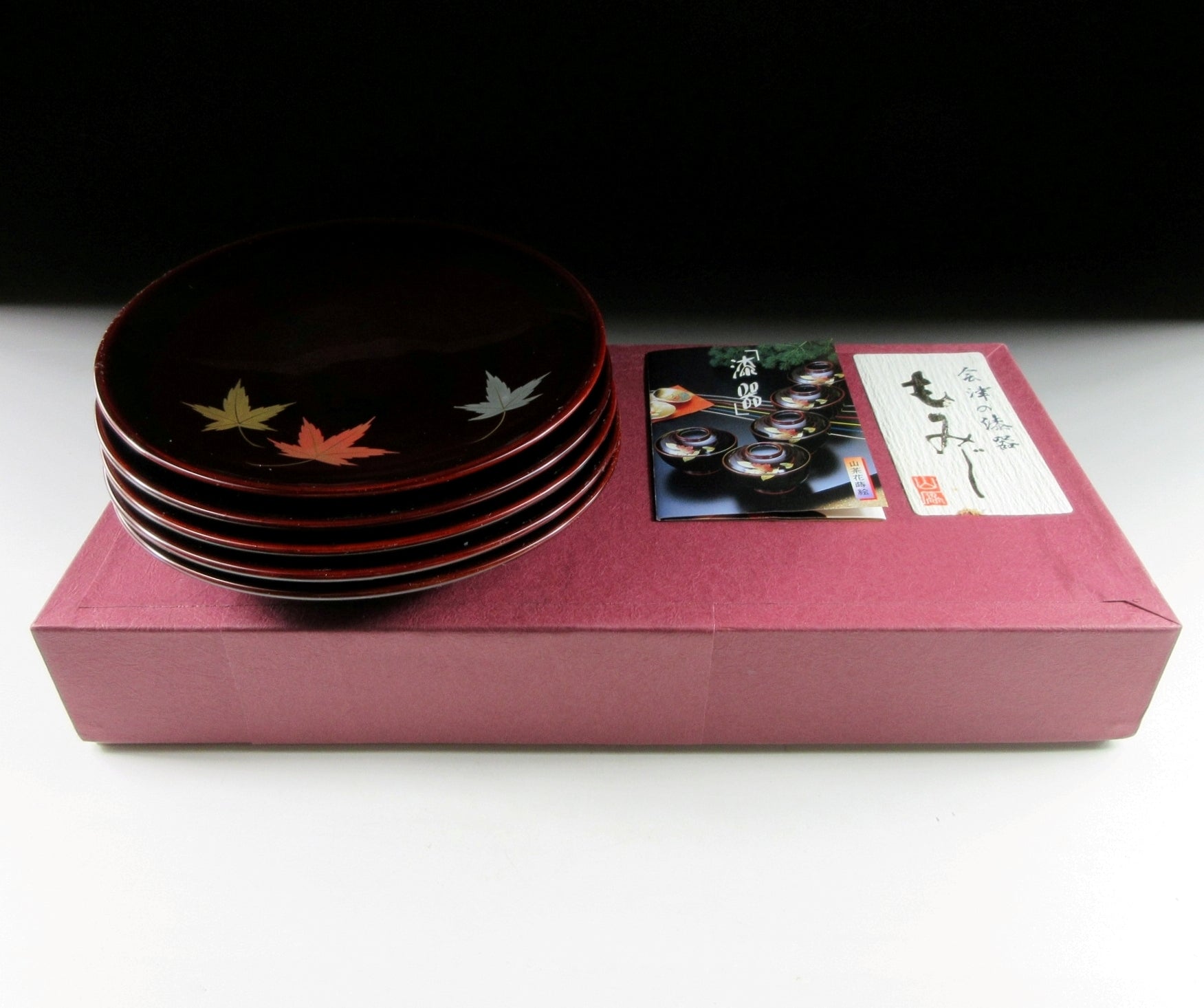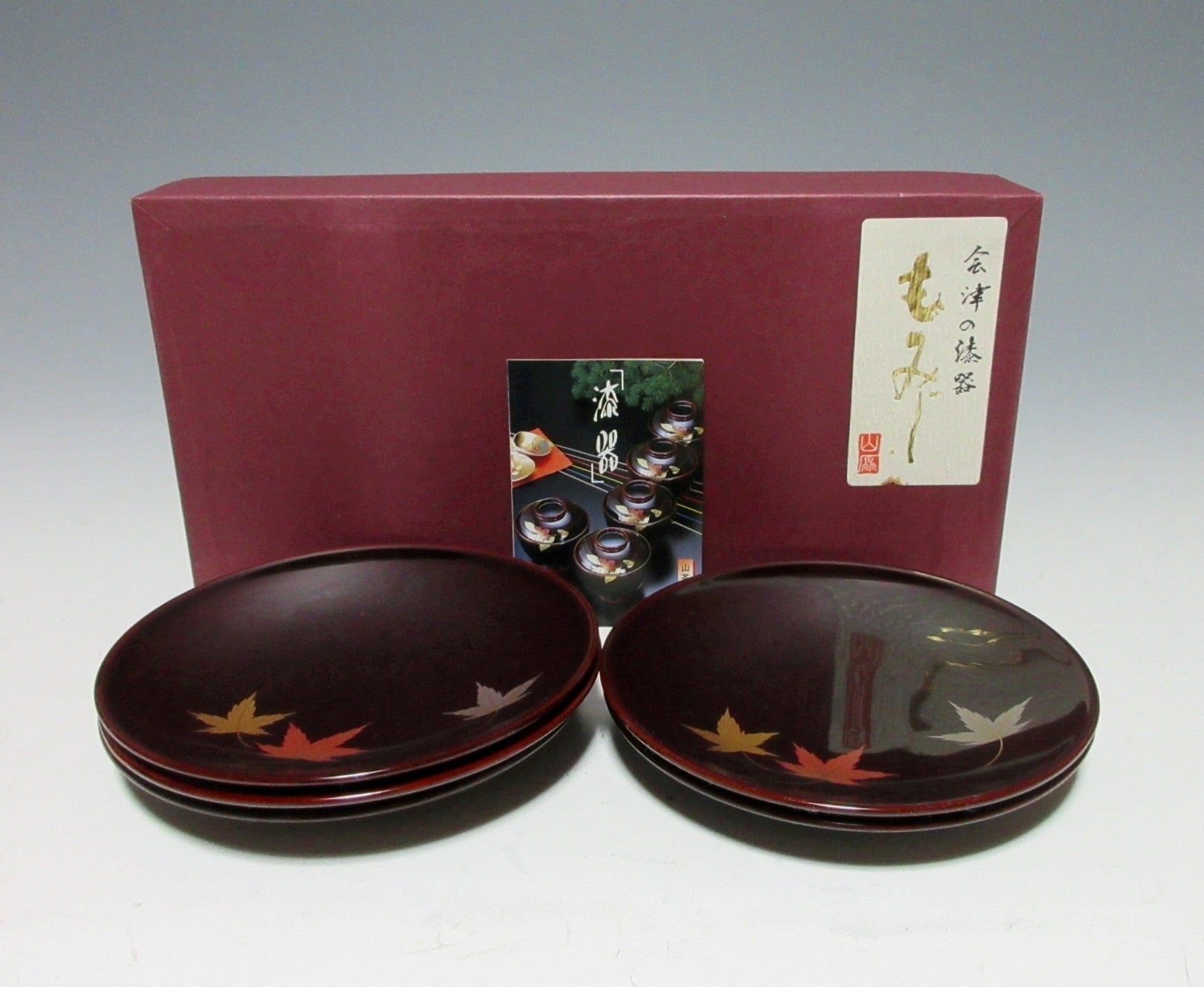Kominka Zakka
Kato Takeo Aizu-nuri Plates
Kato Takeo Aizu-nuri Plates
Couldn't load pickup availability
*SHIPPING OPTIONS VARY DEPENDING ON THE DESTINATION, PLEASE SCROLL TO THE END OF THIS LISTING FOR MORE DETAILS.
This listing is for a set of five small Aizu-nuri lacquerware plates made around 40 years ago by Kato Takeo. They are made of wood and each plate is decorated with makie momiji leaves over a brown lacquered base. This is a beautiful set of plates for serving sweets, and they come with their original paper storage box. They also come with a Japanese language profile paper.
Kato Takeo (b.1911) was a second generation Aizu-ware lacquer craftsperson from Aizuwakamatsu in Fukushima. In 1925 he began studying under his father, master craftsman Kato Shigeyoshi. Shigeyoshi was recognised as the foremost master of marumono lacquerware. Marumono craftspeople specialise in applying lacquer to round pieces such as bowls and sweets containers, whereas an itamono craftsperson specialises in lacquering flat pieces such as boxes or trays. In 1932 Takeo became independent and opened his own workshop, and in 1975 he was certified as a Traditional Craftsperson by the Ministry of International Trade and Industry. During his career his work was selected for several exhibitions, the first being the National Lacquerware Exhibition held in 1930 where he received numerous awards and honours. In 1985 he was designated as a Fukushima Master Craftsperson and received the Prefectural Excellence Medal for Specialised Skills from the Governor of Fukushima Prefecture. **Fellow sellers, this information was researched by Kominka Zakka and CANNOT be used in your own listings.
Urushi lacquerware refers to products that have been coated in natural lacquer collected from urushi trees. The process for lacquering items is long and very labour intensive, each item requiring multiple layers of lacquer that may take anywhere from six months to two years to complete. Heat and humidity are required to dry lacquer evenly and consistently, so Japan’s rainy season and summer months are ideal for this process. Urushi products are not only beautiful but also strong.
Makie refers to a crafting technique in Japan from presumably the Nara period. Craftsmen sprinkle gold or silver metal powder over successive layers of lacquer before it dries. Traditionally pure gold powder, pure gold flakes, and pure silver powder were used to complete motifs on lacquerware. The process of applying gold or silver powder requires both time and skill. At first the craftsman sketches out the design. He or she then adds charcoal powder to the base of the relief, and then a layer of urushi lacquer. Gold or silver powder is sprinkled over the wet lacquer, which acts as an adhesive. The surface is polished and then the process is repeated over and over until a beautiful raised pattern appears.
Sizes
Paper Box: H.4.5cm (1.7”) x 28.2cm (11.1”) x 14.5cm (5.7”)
Plates: H.1.5cm (0.5”) x Dia.13.7cm (5.3”)
Condition
There are very light scratches/scuffing on the bottom, but it’s very minor. There’s also some very minor wear on the front , they may have been used just once or twice.
THESE ARE SHIPPING ESTIMATES BASED ON THE CURRENT GLOBAL SITUATION
**Germany, France, Greece, Spain, Poland, Austria, Slovakia, Lithuania, Slovenia: NO SHIPPING. Very strict and expensive packaging laws in place and we are not licensed to send products to these countries. We have no plan to register at this time because the process is in some cases very expensive and complicated, plus each country has its own set of regulations and application process.
**USA, UK, Canada, Australia, New Zealand, Switzerland, Norway: Airmail Small Packet (approx. 15-28 days). Combined shipping available up to 2kgs for Airmail Small Packet (please send us a message).
**Asia: Airmail Small Packet (approx. 15-21 days). Combined shipping available up to 2kgs for Airmail Small Packet (please send us a message).
**Central Asia, Middle East, South Africa, Brazil, Mexico: EMS Express 10-15 days.
**Russia: No shipping methods available.
Share
